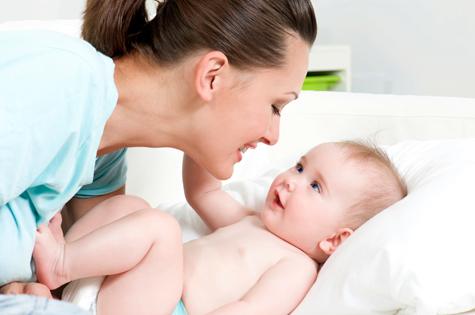Parents may not understand what a baby is trying to say when he or she babbles, but by listening and responding, you’re letting them know that they can communicate – and that leads to children forming complex sounds and using language more quickly.
A study by the University of Iowa and Indiana University has found how parents respond to their children’s babbling can actually shape the way infants communicate and use vocalisations.
The findings challenge the belief that human communication is innate and can’t be influenced by parental feedback. Instead, the researchers suggest that parents who consciously engage with their babbling infants can accelerate their children’s vocalising and language learning.
“It’s not that we found responsiveness matters,” says co-author, Assistant Professor Julie Gros-Louis from the Department of Psychology at the University of Iowa.
The researchers discovered that infants whose mothers responded to what they thought their babies were saying, showed an increase in developmentally advanced, consonant-vowel vocalisations, which means the babbling has become sophisticated enough to sound more like words. The babies also began directing more of their babbling over time toward their mothers.
On the other hand, infants whose mothers did not try as much to understand them and instead directed their infants' attention at times to something else did not show the same rate of growth in their language and communication skills.
A/Professor Gros-Louis says the difference was mothers who engaged with their infants when they babbled let their children know they could communicate. Consequently, those babies turned more often to their mothers and babbled.
“The infants were using vocalisations in a communicative way, in a sense, because they learned they are communicative,” Gros-Louis says.
In a survey a month after the study ended, mothers who were most attentive to their infants’ babbling reported their children produced more words and gestures at age 15 months.
“If you can show the parent can shape what an infant attends to, there is the possibility to shape what the child is sensitive to. In other words, they are learning how to learn.”



















__small.png)










